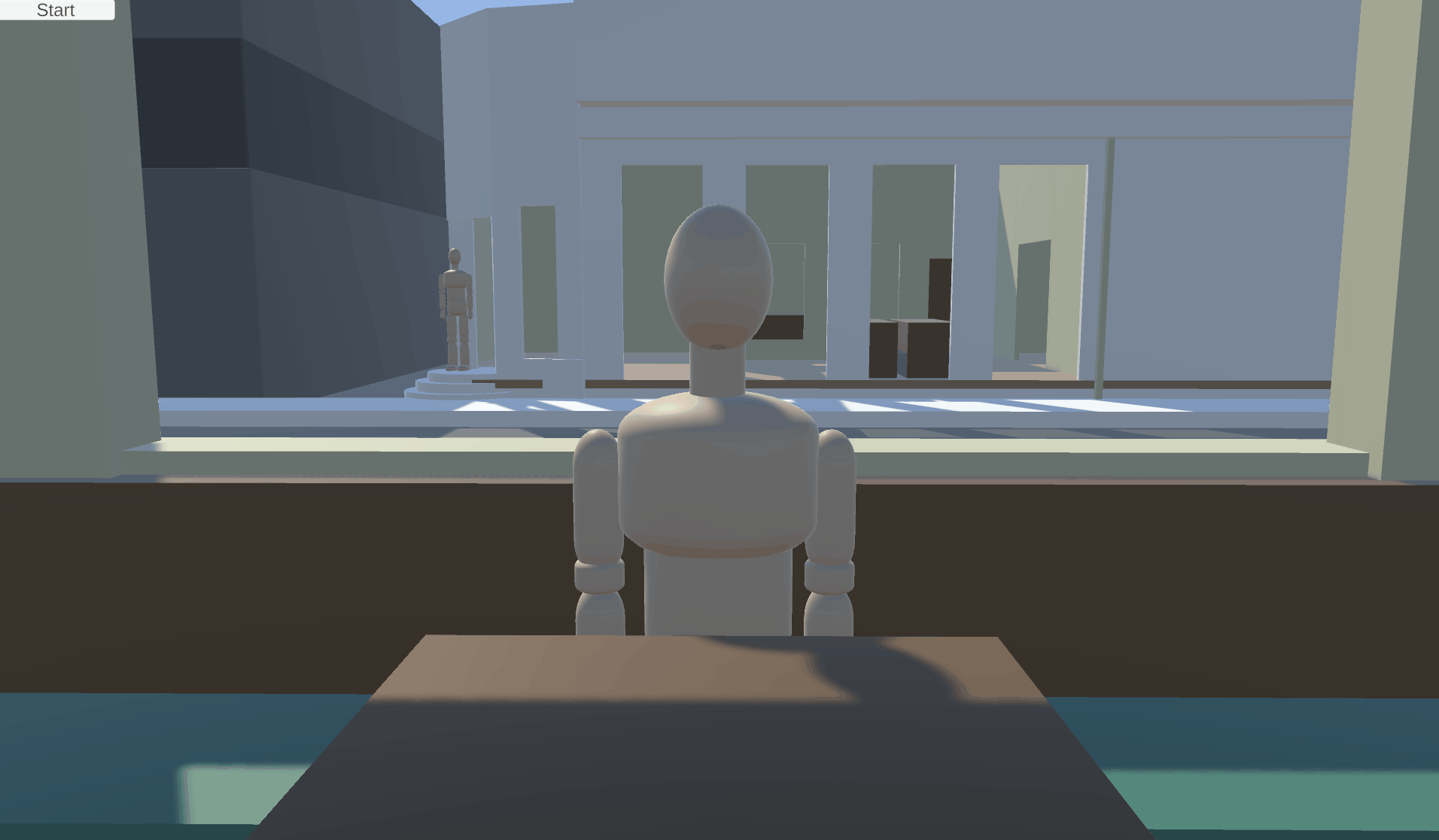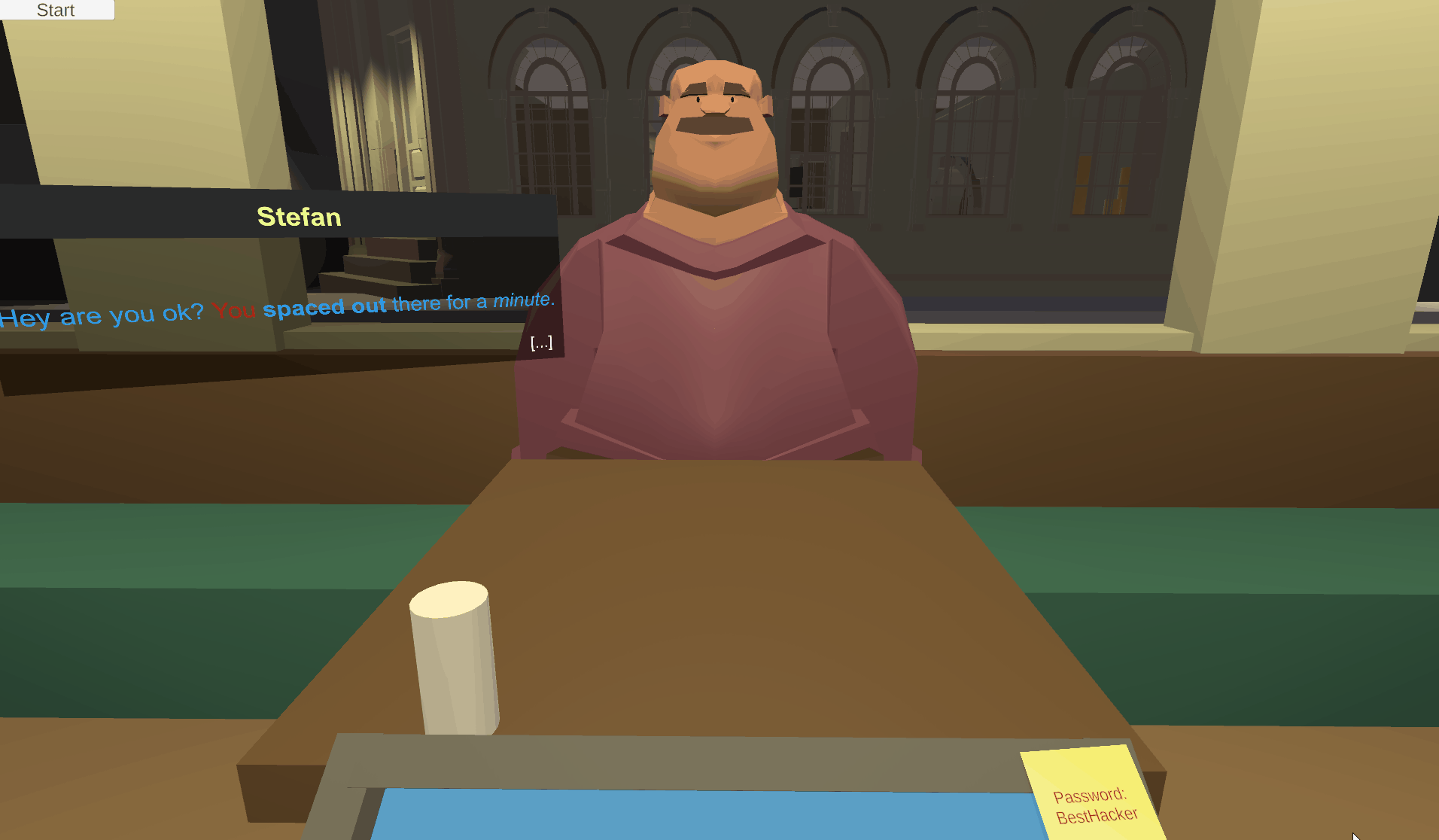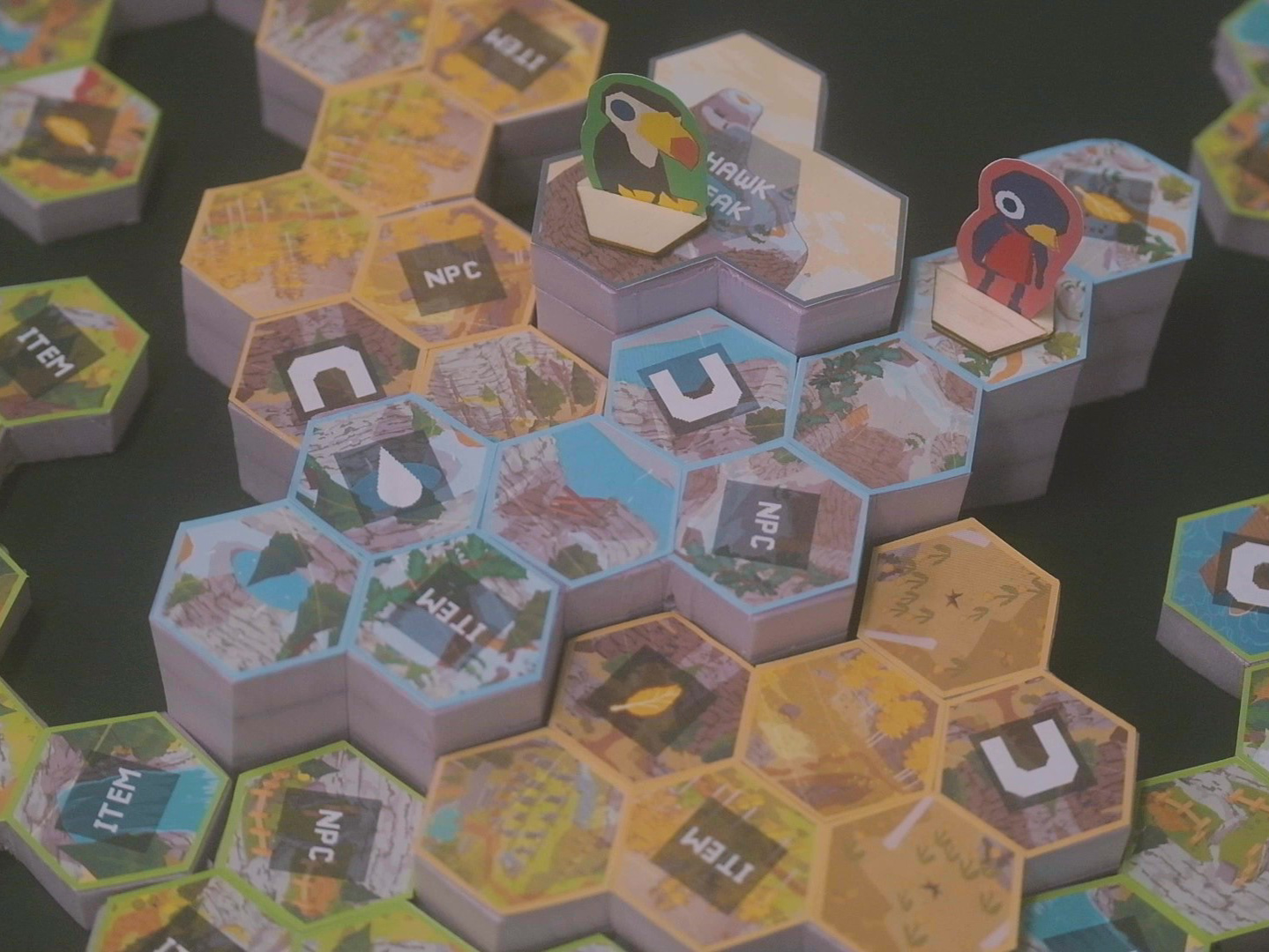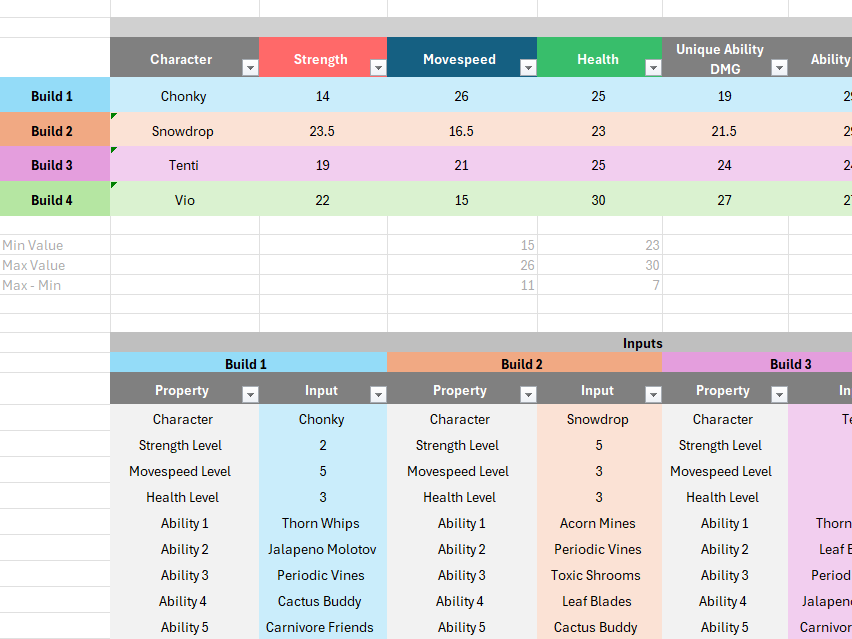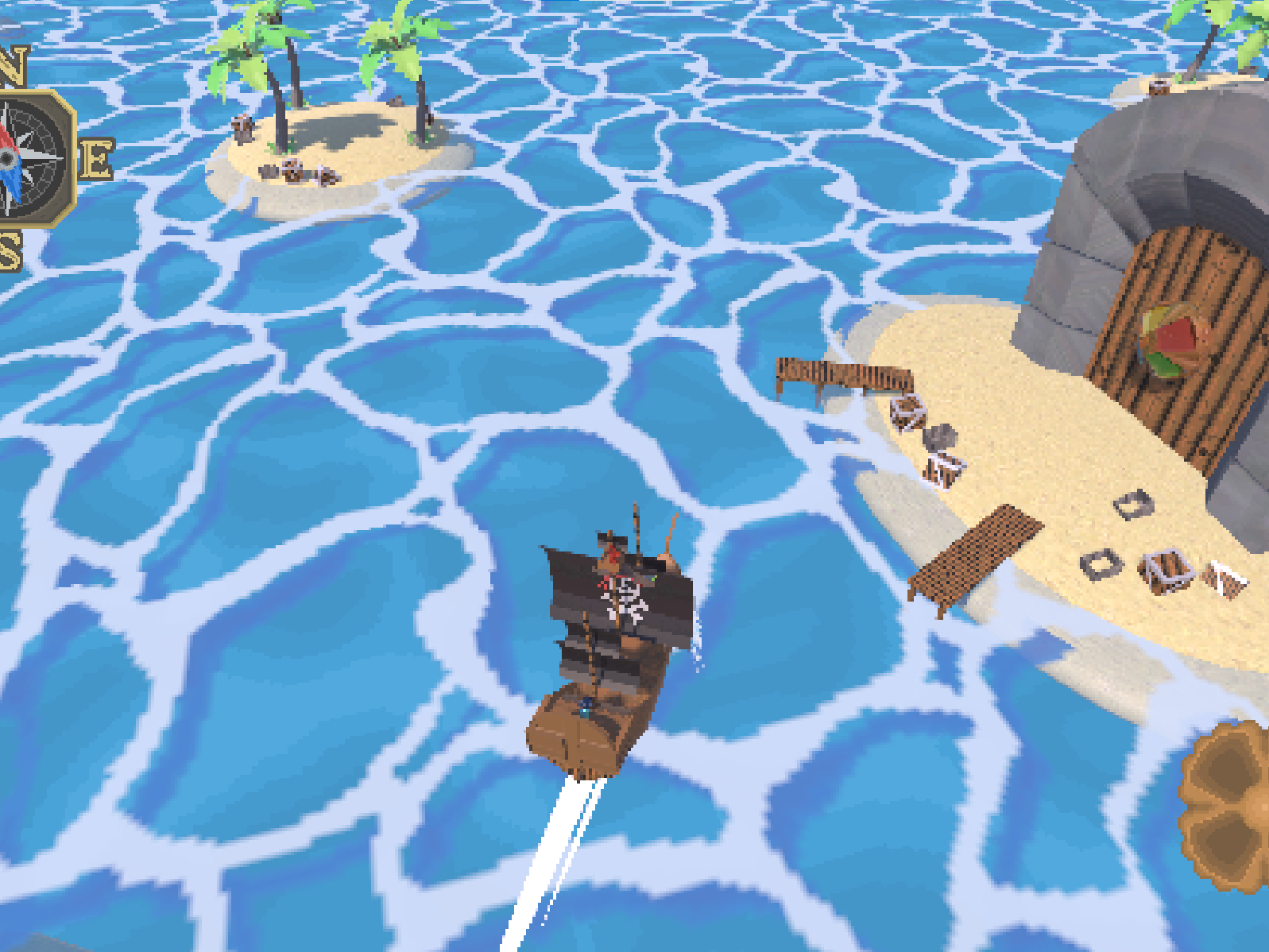Main menu and opening sequence. I implemented the transitions between scenes using a loading screen to ensure a seamless transition.
Laptop navigation demonstration. The goal was to create a simplistic UI of a laptop interface that anyone could recognize and use. The password screen, window buttons, and clock systems assist in this.
Puzzle 1 - Drag and Drop. This puzzle was designed to introduce players to the dialogue-puzzle mechanic. The NPC provides very simple clues to the player, and the player is limited as to what they can input.
Puzzle 2 - Dropdown Message. Expanding off the first puzzle, this one aims to provide slightly more discrete clues to the player and entice them to engage with their puzzle on their own means.
Puzzle 3 - Safe Dial. As the hardest puzzle in the level, this puzzle provides discrete clues and little guidance as to how the puzzle is interacted with. Players are required to make connections between multiple puzzle elements at the same time.
